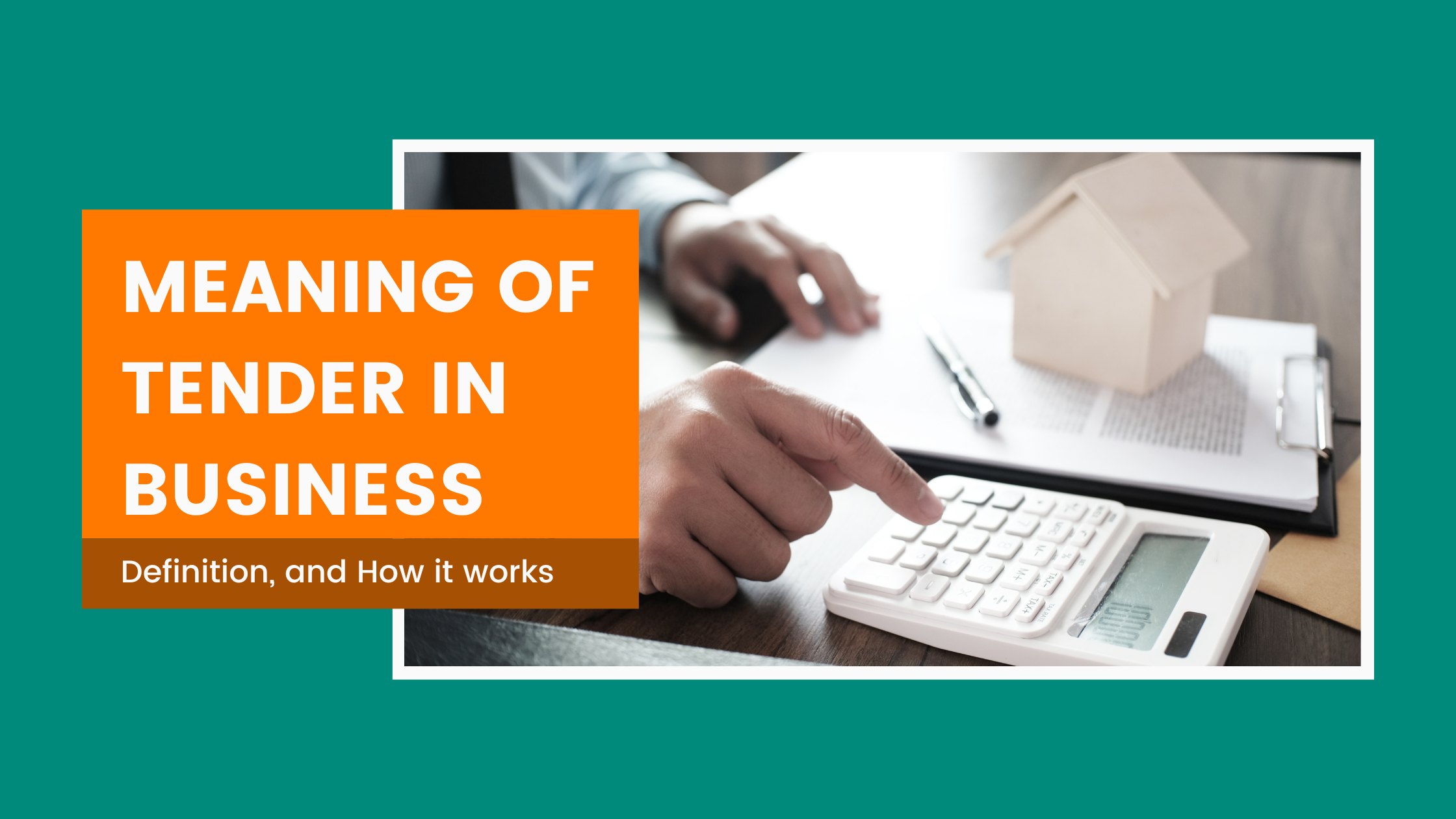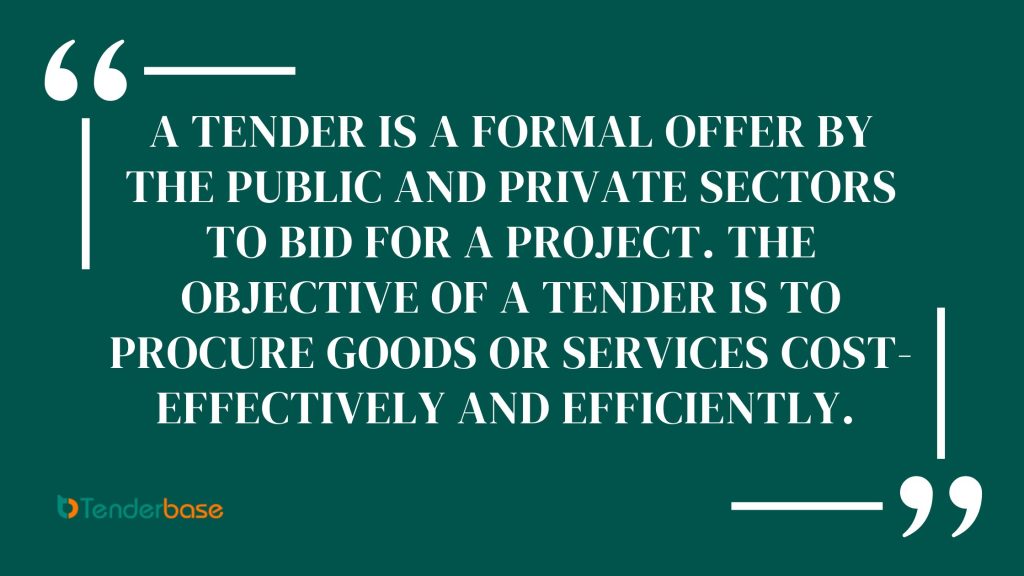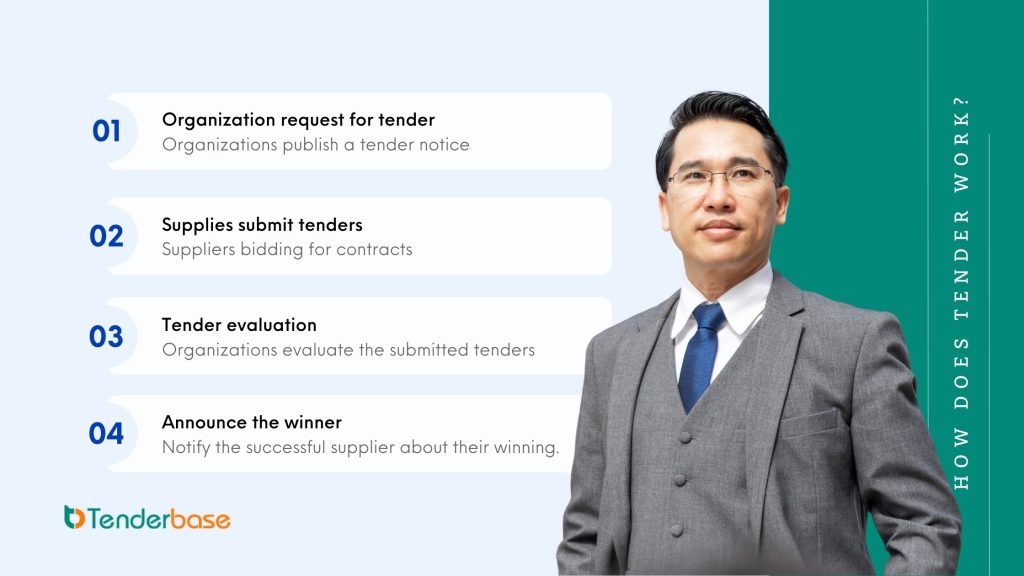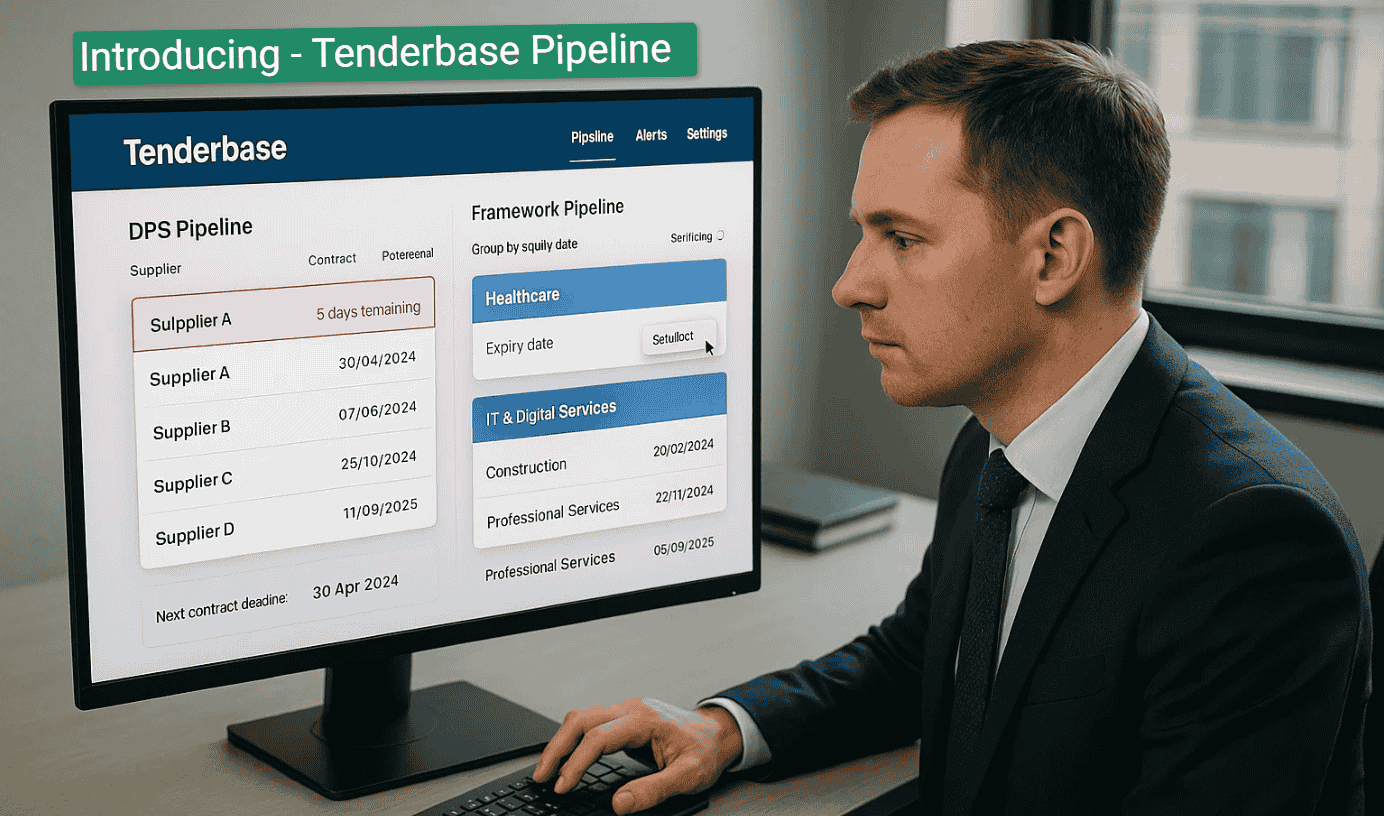

Did you know that 30-50% of large business contracts are awarded through tender? In business, a tender is a formal invitation for bids offered by the government or a large business for a project. The purpose of a tender is to find eligible suppliers for the project. It will outline the requirements and eligibility for the suppliers and invite formal proposals from the prospects.
If you want to get awarded a tender, you need to know what tenders are, the tendering process, and their requirements. Let’s first know about tender a bit more and explore the topic in a new way that you might not have known before.

A tender is a formal offer by the public and private sectors to bid for a project. The objective of a tender is to procure goods or services cost-effectively and efficiently. Suppliers usually respond to the invitation to tender ( ITT) with a formal proposal and estimated cost and timeline required for the project.
A tender is awarded to the best bidder considering the price and capability of the tenderer. This process of finding a suitable supplier ensures transparency. It also ensures that the tenderers can win a bid through a fair competition.
To understand tenders and their application, we need to know different types of tenders. Grossly, we can differentiate tenders into five groups.
These tenders are open to all interested suppliers or contractors who qualify for the tender requirements. Open tenders are publicly advertised to find more prospects. This type of tender maximizes competition and transparency. However, it can be time-consuming to review all the bidders because of the large number of applicants.
Closed tenders are restricted to a selected group of suppliers or contractors. Therefore, it is often termed restricted tender. In this process, there can be a pre-qualification process based on which the organizations shortlist the suppliers. Closed tenders ensure that only qualified businesses bid for it. It is a more efficient tendering process saving time for organizations. However, this type of tender discourages competition and diversity. It lacks cost-effectiveness.
In a negotiated tender, the buyer is involved in negotiation with the suppliers. This tendering process is applied for complex projects where the buyer needs to seek customized solutions and inputs from the suppliers during the process. However, this type of tender can lead to favoritism due to the lack of transparency.
Technical and commercial proposals in a single-stage tender are submitted together in one step. They are simplified. These tenders save time for the suppliers by not requiring them to participate in the process multiple times. However, it does not allow bid adjustment based on technical evaluations.
In a two-stage tender, the bidders propose their technical aspects and scope of work. Shortlisted suppliers submit their financial proposals in the second stage of the process. This is a time-consuming process and increases complexity.

As I mentioned earlier, a tender is the process of finding suitable suppliers for government and large businesses. There is a defined process for this procurement that involves tender publishing, submission by the suppliers, evaluation, and awarding of the tender to the most suitable supplier.
Governments or organizations publish a tender notice to notify all potential suppliers about the tender. The notice includes all the requirements and specifications for the project or services. It invites the suppliers to submit their bids and mentions details on the submission process, deadline, and evaluation criteria.
The tender proposal submission is often referred to as the bidding for contracts. After getting notification about the tender, interested suppliers prepare the proposal and other required documents to submit their bids. Bid writing, pricing, document preparation, and submission are a few activities in this step. Suppliers try to present their information in a good way to demonstrate their ability to meet project requirements. Hence having a strong bid strategy can grow your business.
Your organization, along with other prospective vendors, will submit proposals for the open contract opportunity, effectively serving as applications to undertake the work. Some bidders will be eliminated in the initial stage due to non-conformance or failure to satisfy minimum requirements, while others will advance to the pre-qualification phase, which is used to gauge capabilities and experience.
Only a select few will be invited to complete the comprehensive tender response forms. Following the buyer’s evaluation, one supplier (or multiple, if it is a framework agreement) will be granted the contract.
Organizations evaluate the submitted tenders after the deadline is over. The evaluation committee will make its judgment based on the bid price, experience, quality, and compliance with the requirements. They try to be fair and honest to make an objective decision to find the best supplier for the project.
After the evaluation, the government or organizations will notify the successful supplier about their winning of the project. This notice includes all the details about the next steps. Suppliers usually need to sign a contract and commence the project after winning it.
Tender documents are the essential documents that are necessary for the suppliers to respond to the tender. The invitation to Tender ( ITT) is the principal tender document. This document will include all the necessary information involving the tender and its submission criteria. It will have a number of supplementary documents regarding the bidding process. Below are a few of them.
This document describes the goods and services required for the project. It includes the details about the service needed, who’s responsible for what concerning the service, quality control, health and safety data, disposal requirements, and any other necessary information regarding the product that needs to be supplied.
This document describes the relationship between the buyer and the supplier. It will define some common terms for a project such as obligations, project timeline, milestones, performance KPIs, payment terms, invoicing, terms of termination, and disputes. Any other project specific terms and conditions will be included in this document.
This document will list all the items individually that need to be priced. Suppliers need to mention the specification of the goods or services while mentioning the bidding price.
The selection criteria for the tender are mentioned in detail in this document. The criteria may include compliance check, detailed evaluation, and award procedure, policy for the improperly priced tenders, and any other related terms.
The tender form is a document of undertaking prepared by the buyer. It has to be signed by the supplier and submitted with the proposal. This document is an acknowledgment of the supplier that it is aware of the tender documents and terms and conditions of the tendering process.
Tender and bidding are two related terms that people often get confused with. Tender refers to the total process of procuring goods or services by requesting the tenderers to bid their best price with a formal proposal. Bidding is a part of the total tendering process where the tenderers quote their prices for the requested service.
Bidding is not exclusive to tenders. People can bid in various other contexts. Bidding can happen in auctions, project contracts, or other procurement processes for small businesses that are less formal than tenders. The objective of this process is to find out the best value-for-money solution for the problem.
The tendering process benefits both purchasers and tenderers. Let’s discuss the advantages of tenders for both parties separately.
Below are the key benefits of using the tendering process from the purchasers’ point of view:
Below are the key benefits of the tendering process from the suppliers’ point of view:
Finding prospective tenders can be challenging for the tenderers. Tenders are published across multiple platforms and sources. Keeping track of all these prospects is a tedious and time-consuming job. However, below are the sources that the tenderers keep their eyes on for tendering opportunities.
The Tenderbsae is the best way to find tender offers for professional business owners and potential bidders. With its user-friendly interface and robust search engine, Tenderbase offers a comprehensive database of all tender details from various public sector industries.
Business owners can easily find relevant tenders that match their expertise and interests, while potential bidders can explore a wide range of opportunities to grow their businesses.
Tenderbase also provides detailed information about each tender, including eligibility criteria, submission deadlines, and contact details, making it easier for users to make informed decisions before submitting proposals. Additionally, the platform allows users to set up email alerts for new tenders that match their preferences, ensuring that you never miss out on any opportunities.
Many governments have official websites for publishing government tenders. Therefore, these websites are one of the major sources of tenders. For example, Contracts Finder is a UK based portal that is managed by the UK government to publish all of their tenders there. Similarly, the System for Award Management (SAM) is the platform for the US government to manage its tender opportunities. These websites are highly trusted and used by the suppliers.
Large corporations maintain their portals for publishing their tenders. Shell Supplier Getaway is an example of a private portal where suppliers can register and upload their profiles. If any prospective project appears, the company will notify the tenderer if it matches the requirements.
Some third-party tender listing portals list all the tenders and provide them as a service to the tenderers. These portals can provide country, specific location, or category-based services. Tenderbase is an example of a portal that lists thousands of public sector tenders for the UK and Ireland. It has an advanced tender filtering process, alert and notification system, team management, third-party application integration, and a few other essential features that help the suppliers massively in the tendering process.
A tender is a formal and structured process of inviting prospective tenderers to submit their proposals to supply goods and services. This process involves formal processes like detailed documentation, submission guidelines, and a strict evaluation process. On the other hand, offers are general proposals that are made by one party to enter into a contract. It is less formal and the terms can be negotiated freely.
An invitation to Tender ( ITT) or a Request for Tender ( RFT) is a formal document issued by the government or large corporations asking for bids from tenderers for a specific project. An ITT has several mandatory sections including the requirements, specifications, deadlines, and other criteria for the project. It may also include information about the scope of the project, bidding guidelines, evaluation criteria, and other terms and conditions.
Understanding the requirements of the tender is the primary step to winning a tender. If it aligns with the capability of the tenderer, then it should research the organization to understand its history, trends, and preferences. Additionally, the tenderer needs to research the market and competition to find its competitive advantage.
A tender evaluation is a complex multi-stage process. Different organization may have their evaluation system. However, in general, evaluation starts with initial screening that verifies whether the tenderers have met the eligibility requirements. Afterward, technical evaluation is carried out to assess the specifications, quality aspects, etc. Financial evaluation is also a vital part of this process where the value for money of the proposal is evaluated. Finally, the evaluators assess the risk, rank the suppliers, and make final decisions.
After awarding a tender, the buyers may negotiate it further to finalize the terms and conditions. They will sign the contract and the buyer will issue a formal notification of the award. The supplier will receive a letter of acceptance. The project will start with a kickoff meeting between the tenderer and the stakeholders of the project.
A pre-qualification questionnaire (PQQ) is a document used by organizations and businesses to pre-screen potential suppliers or contractors before inviting them to participate in a formal procurement process, such as bidding for a contract. The PQQ typically includes questions about the company’s financial stability, relevant experience, certifications, and other qualifications to determine if they meet the basic requirements to be considered for the opportunity. It helps the organization narrow down the pool of potential suppliers and ensure that only qualified candidates proceed to the next stage of the selection process. Overall, the PQQ serves as a preliminary assessment tool to help identify suitable vendors or contractors who are capable of meeting the organization’s needs.
Tenders make it easy for the government and organizations to procure the best goods and services at the best price. It benefits the suppliers by creating fair competition. To win a tender, suppliers need to know what a tender is, how to find prospective tenders, and how to submit them effectively.
Tenderbase empowers businesses to find and win public sector tenders in the UK. With a user-friendly platform, personalized dashboards, and expert support, we simplify the tender process and fuel business growth. Join us and unlock the potential of Public Sector contracts for your success.
LEARN MORE Technical
Technical
Looking for guides, articles or something more specific? Browse all our posts by topics


Looking for guides, articles or something more specific? Browse all our posts by topics.